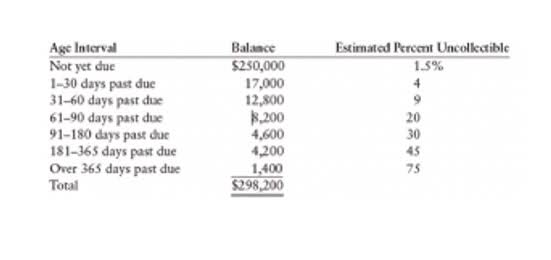
ProjectManager has the features you need to lead your project to profitability. As you work to calculate the cost-benefit analysis of your project, you can get help from some of the free project management templates we offer on our site. We have dozens of free templates that assist every phase of the project life cycle. There are other methods that complement CBA in assessing larger projects, such as NPV and IRR. Overall, though, the use of CBA is a crucial step in determining if any project is worth pursuing. Cost-benefit analysis is best suited to smaller to mid-sized projects that don’t take too long to complete.

Being a Chief Financial Officer (CFO) and leading a phenomenal finance team isn’t just about financial management and strategy – it’s about people and being an effective people manager…. First, it lifts decision making above gut reactions by forcing an objective, data-driven approach. Instead of making important choices based on feelings, you make them based on facts because you’re relying on hard data. This will help ensure that your cost-benefit analysis is not just a set of numbers, but a persuasive tool for making informed and strategic decisions.
How to Do a Cost Benefit Analysis
One drawback of this ratio is that it does not indicate the project’s size or provide a specific value on what the asset/project will generate. For example, two projects may show a benefit-cost ratio of two, but the present value of cash flows can be significantly different. Direct costs to expanding production are readily apparent, for example, the cost of the new factory the main goal of using a cost-benefit analysis is to reach a and additional labor costs. Fourthly, CBA traditionally uses a static analysis that assumes that costs and benefits are constant over time. However, there is a need to develop new methods for dynamic analysis that take into account changing costs and benefits over time. Another challenge of CBA is that it relies on assumptions about the future, which can be uncertain.

ProjectManager is online project management software with tools, such as a real-time dashboard, that can collect, filter and share your results in easy-to-understand graphs and charts. Look over the costs and benefits of the project, assign them a monetary value and map them over a relevant time period. It’s important to understand that the cost-benefit ratio formula factors in the number of periods in which the project is expected to generate benefits.
Five key steps in conducting a cost-benefit analysis
The current COVID-19 crisis places a microscope on the decisions governments and not-for-profit organizations make. It is essential for decision-makers to understand the impacts of their decisions, as they have a fiduciary responsibility as stewards of the public funds they manage. The main goal of doing a cost-benefit analysis is to determine whether the benefits of a potential project or decision outweigh the costs. If you don’t want to include more complex calculations like net present value, benefit-cost ratio, discount rates, and sensitivity analysis, you don’t have to. To keep things simple, you can just calculate your net cost-benefit and leave it at that.
To make your calculations as accurate as possible, try comparing costs and benefits from similar projects you’ve completed in the past. They can help you see the real-life economic value of past costs and benefits—plus any items or circumstances you might have overlooked. Using a project management tool can make this step easy—since all of your project information and communications are housed in one place, you can easily look back at past initiatives. Cost-benefit analysis (CBA) is a process performed by individuals, governments and businesses when considering a course of action or proposed project. It serves as a framework for evaluating the desirability of an action by comparing total benefits against total costs.
What Is A Cost-Benefit Analysis?
Our online tool automatically tracks the percentage complete for each item in real time. All the data you collect in our list view is visible throughout the tool. Regardless of the view, they all update live and they’re ready for you to utilize.
- Account for possible shifts in essential elements that might influence the outcome.
- Secondly, there is a need to better understand and address the distributional effects of projects and decisions.
- He currently researches and teaches economic sociology and the social studies of finance at the Hebrew University in Jerusalem.
- He is a CFA charterholder as well as holding FINRA Series 7, 55 & 63 licenses.
- There are other methods that complement CBA in assessing larger projects, such as NPV and IRR.
- It can also be more complex, such as deciding whether to purchase a property in a suburb with a large yard or a luxury loft condominium with breathtaking city views.
- For a company to create value for its stakeholders, it must invest in beneficial projects.
There are also several potential disadvantages and limitations that should be considered before relying entirely on a cost-benefit analysis. If the projected benefits outweigh the costs, you could argue that the decision is a good one to make. If, on the other hand, the costs outweigh the benefits, then a company may want to rethink the decision or project. From these data, it is clear that CVG has benefited economically from its solid waste reduction programs. Average annual costs amounted to $16,440 per year, while benefits equaled $1,308,865 per year.
This ongoing revision ensures that the analysis remains aligned with current realities and can support dynamic decision making in a changing business landscape. Regular updates can also help in identifying new opportunities or risks that were not apparent in the initial analysis. Usually, this involves calculating the net present value (NPV), return on investment (ROI) or internal rate of return (IRR). Outline the objectives, the timeline and the specific activities involved. Understanding the full scope ensures that all relevant costs and benefits are considered in the analysis. This approach computes the present worth of future cash flows by adjusting them to today’s value and subtracting the initial investment.
- It is critical to avoid bias, as it is easy to build in assumptions that prove the desired outcome.
- The project scope is kicked off by identifying the purpose of the cost-benefit analysis.
- It seems obvious to say, but incorrect data can skew the analysis results.
- Sometimes, the most crucial factors are the ones you don’t see right away.
- And, as accurate as you think you are, you’ll typically be at least +/-25% off on cost and benefit estimates.
An advantage of cost-benefit analysis is that it allows for a mostly quantitative analysis so that an individual or organization can make the best-informed decisions. Since no individual or organization has unlimited resources, cost-benefit analysis helps determine the optimal resource allocation. Any time a company considers making an investment, a cost-benefit analysis should be performed. Whether that is investing in capital expenditures, making an acquisition or investing excess cash, the action should only be accepted if the benefits are greater than the costs. However, it has its own set of limitations and challenges that need to be addressed.
